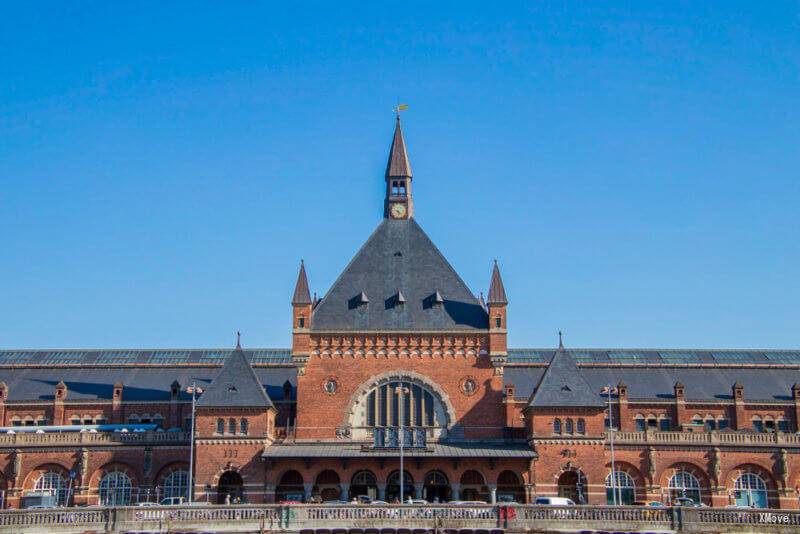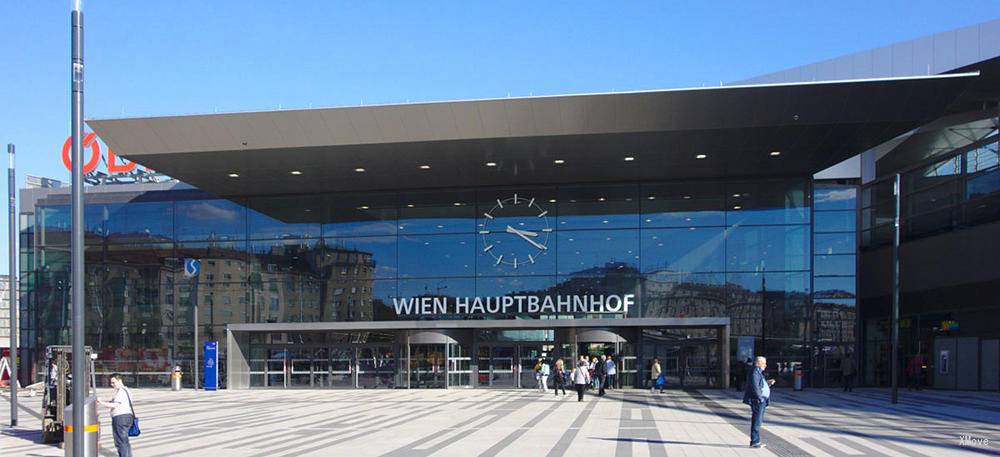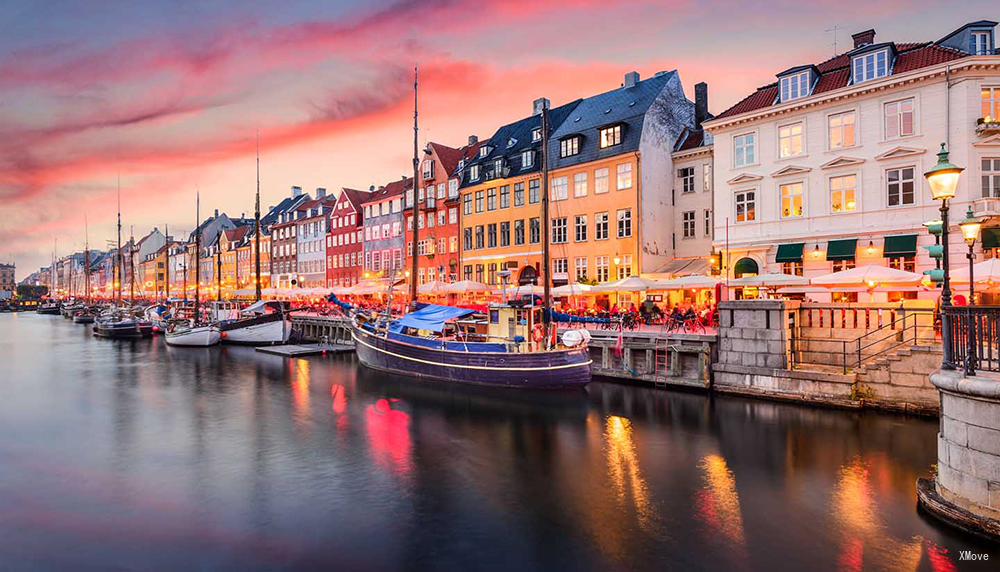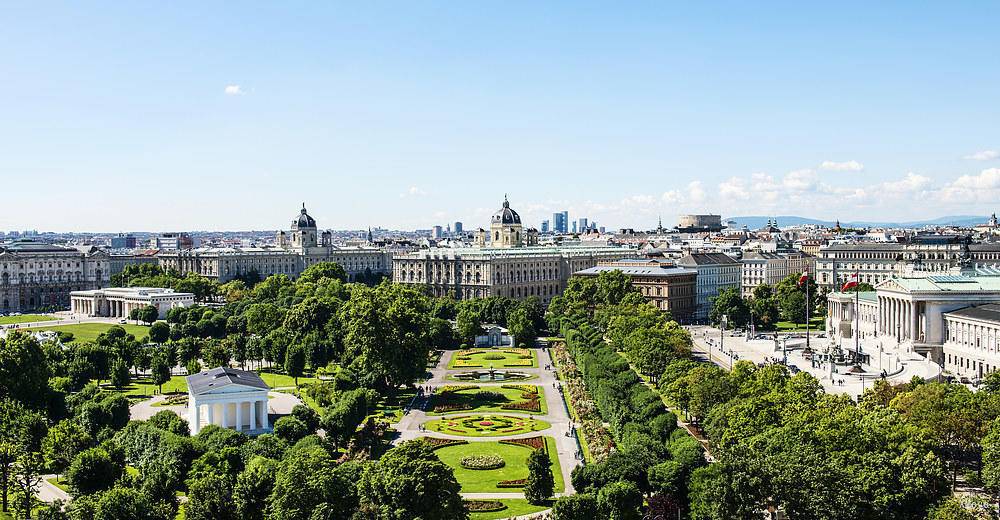Köbenhavn H to Vienna Central Station: Trains, Buses, Fares, Today's Connections, Routes, Duration, Types of Trains, Station Guides, Tips, Journey
Denmark Train Tickets
Train schedule Köbenhavn H to Vienna Central Station(Wien Hbf)
Popular train routes departing from Köbenhavn H
* Hannover Central(Hannover Hbf)
* Amsterdam Centraal
* Interlaken Ost
* Odense St.
* Duesseldorf Hbf(Düsseldorf Hbf)
* Berlin Hohenzollerndamm
* Berlin Central Station(Berlin Hbf)
Popular train routes arriving in Köbenhavn H
* Strasbourg
* Wismar
* Göteborg Central(Göteborg C)
* Rue Aalborg(Aalborg St)
* Überlingen
* Wismar
* Hambourg(Hamburg Hbf)
Popular train routes departing from Vienna Central Station(Wien Hbf)
* St. Valentin
* Hieflau
* Warszawa Central Station(Warszawa Centralna)
* Warszawa Central Station(Warszawa Centralna)
* Bucuresti Nord Gara B (Basarab,Bucharest)
* Budapest Kelenfold(Budapest Kelenföld)
* Ljubljana
Popular train routes arriving in Vienna Central Station(Wien Hbf)
* Jennersdorf
* Belgrade(Beograd)
* Venice Mestre(Venezia Mestre)
* Freilassing
* Sopron
* Verona Porta Nuova
* Hallstatt

Köbenhavn H
Located in the city centre, all trains pass through this station or start here. There are many cities in Denmark that can be reached by trains. In addition to the Danish cities, there are also famous cities such as Malmö in Sweden, Hamburg in Germany and Amsterdam in the Netherlands. All light rail express trains (except F line) all pass this site
There are many trains from Copenhagen to various cities in Denmark. There are trains to all parts of the country, including 12 minutes to the airport, and some important attractions, City Hall, pedestrian street, round tower and port are all within walking distance. Going to the little mermaid is relatively far away.
The international route is Copenhagen → Hamburg, passing through Lübeck. Or the night train departs from Copenhagen to Hamburg, Amsterdam, Frankfurt, Dresden, Prague and other places, or express trains to the Nordic cities of Gatpo Stockholm.
Köbenhavn H - Station Guide | Departures and Arrivals | Popular RoutesVienna Central Station
Vienna's largest railway station: the central railway station (Wien Hauptbahnhof). The line is mainly connected to Eastern Europe, Slovakia, Hungary, Poland, Bulgaria and other places as well as Stuttgart, Paris, Venice, Athens and other cities in Western Europe.
Vienna Central Station - Station Guide | Departures and Arrivals | Popular Routes

Copenhagen (Danish: København [kʰøpm̩ˈhaʊ̯ˀn] ) is the capital and most populous city of Denmark. As of July 2018, the city has a population of 777,218 (616,098 in Copenhagen Municipality, 103,914 in Frederiksberg Municipality, 43,005 in Tårnby Municipality, and 14,201 in Dragør Municipality). It forms the core of the wider urban area of Copenhagen (population 1,320,629) and the Copenhagen metropolitan area (population 2,057,737). Copenhagen is situated on the eastern coast of the island of Zealand; another small portion of the city is located on Amager, and it is separated from Malmö, Sweden, by the strait of Øresund. The Øresund Bridge connects the two cities by rail and road. Originally a Viking fishing village established in the 10th century in the vicinity of what is now Gammel Strand, Copenhagen became the capital of Denmark in the early 15th century. Beginning in the 17th century it consolidated its position as a regional centre of power with its institutions, defences and armed forces. After a plague outbreak and fire in the 18th century, the city underwent a period of redevelopment. This included construction of the prestigious district of Frederiksstaden and founding of such cultural institutions as the Royal Theatre and the Royal Academy of Fine Arts. After further disasters in the early 19th century when Horatio Nelson attacked the Dano-Norwegian fleet and bombarded the city, rebuilding during the Danish Golden Age brought a Neoclassical look to Copenhagen's architecture. Later, following the Second World War, the Finger Plan fostered the development of housing and businesses along the five urban railway routes stretching out from the city centre. Since the turn of the 21st century, Copenhagen has seen strong urban and cultural development, facilitated by investment in its institutions and infrastructure. The city is the cultural, economic and governmental centre of Denmark; it is one of the major financial centres of Northern Europe with the Copenhagen Stock Exchange. Copenhagen's economy has seen rapid developments in the service sector, especially through initiatives in information technology, pharmaceuticals and clean technology. Since the completion of the Øresund Bridge, Copenhagen has become increasingly integrated with the Swedish province of Scania and its largest city, Malmö, forming the Øresund Region. With a number of bridges connecting the various districts, the cityscape is characterised by parks, promenades and waterfronts. Copenhagen's landmarks such as Tivoli Gardens, The Little Mermaid statue, the Amalienborg and Christiansborg palaces, Rosenborg Castle Gardens, Frederik's Church, and many museums, restaurants and nightclubs are significant tourist attractions. The largest lake of Denmark, Arresø, lies around 27 miles (43 kilometers) northwest of the City Hall Square. Copenhagen is home to the University of Copenhagen, the Technical University of Denmark, Copenhagen Business School and the IT University of Copenhagen. The University of Copenhagen, founded in 1479, is the oldest university in Denmark. Copenhagen is home to the FC København and Brøndby football clubs. The annual Copenhagen Marathon was established in 1980. Copenhagen is one of the most bicycle-friendly cities in the world. The Copenhagen Metro launched in 2002 serves central Copenhagen. The Copenhagen Metro is scheduled to expand radically with the opening of the City-ring line during fall 2019, the new line will connect all inner boroughs of the city by metro, including The Central Station, and will open up 17 new stations for Copenhageners. The new metro line is a part of the city's strategy to transform mobility towards sustainable modes of transport such as public transport and cycling as opposed to automobility. Additionally the Copenhagen S-train, the Lokaltog (private railway) and the Coast Line network serves and connects central Copenhagen to outlying boroughs. The Copenhagen-Ringsted Line will relieve traffic congestion in the corridor between Roskilde and Copenhagen. Serving roughly two million passengers a month, Copenhagen Airport, Kastrup, is the busiest airport in the Nordic countries.
Copenhagen - Guide, Attractions, Tours, Sightseeings | Train from/to Copenhagen | Popular RoutesVienna ( ; German: Wien [viːn] ) is the national capital, largest city, and one of nine states of Austria. Vienna is Austria's primate city, with a population of about 1.9 million (2.6 million within the metropolitan area, nearly one third of the country's population), and its cultural, economic, and political centre. It is the 7th-largest city by population within city limits in the European Union. Until the beginning of the 20th century, it was the largest German-speaking city in the world, and before the splitting of the Austro-Hungarian Empire in World War I, the city had 2 million inhabitants. Today it is the second largest German-speaking city after Berlin and just before Hamburg. Vienna is host to many major international organizations, including the United Nations, OPEC, and the OSCE. The city is located in the eastern part of Austria and is close to the borders of Czechia, Slovakia, and Hungary. These regions work together in a European Centrope border region. Along with nearby Bratislava, Vienna forms a metropolitan region with 3 million inhabitants. In 2001, the city centre was designated a UNESCO World Heritage Site. In July 2017 it was moved to the list of World Heritage in Danger.Additionally to being labeled the "City of Music" due to its musical legacy, Vienna is also said to be the "City of Dreams", because of it being home to the world's first psychoanalyst Sigmund Freud. Vienna's ancestral roots lie in early Celtic and Roman settlements that transformed into a Medieval and Baroque city. It is well known for having played a pivotal role as a leading European music centre, from the age of Viennese Classicism through the early part of the 20th century. The historic centre of Vienna is rich in architectural ensembles, including Baroque palaces and gardens, and the late-19th-century Ringstraße lined with grand buildings, monuments and parks.Vienna is known for its high quality of life. In a 2005 study of 127 world cities, the Economist Intelligence Unit ranked the city first (in a tie with Vancouver and San Francisco) for the world's most liveable cities. Between 2011 and 2015, Vienna was ranked second, behind Melbourne. In 2018, it replaced Melbourne as the number one spot and continued as the first in 2019. For ten consecutive years (2009–2019), the human-resource-consulting firm Mercer ranked Vienna first in its annual "Quality of Living" survey of hundreds of cities around the world. Monocle's 2015 "Quality of Life Survey" ranked Vienna second on a list of the top 25 cities in the world "to make a base within."The UN-Habitat classified Vienna as the most prosperous city in the world in 2012/2013. The city was ranked 1st globally for its culture of innovation in 2007 and 2008, and sixth globally (out of 256 cities) in the 2014 Innovation Cities Index, which analyzed 162 indicators in covering three areas: culture, infrastructure, and markets. Vienna regularly hosts urban planning conferences and is often used as a case study by urban planners.Between 2005 and 2010, Vienna was the world's number-one destination for international congresses and conventions. It attracts over 6.8 million tourists a year.
Vienna - Guide, Attractions, Tours, Sightseeings | Train from/to Vienna | Popular Routes
Denmark Train Tickets
Hot Journeys
* Paris -> Venice(Venezia)
* Rome(Roma) -> Florence
* Busan(부산) -> Seoul(서울)
* Madrid(Madrid) -> Barcelona
* Cologne(Köln) -> Frankfurt Airport(Frankfurt Flughafen)
* Venice(Venezia) -> Milan
* Naples -> Rome(Roma)
* Kaohsiung(高雄) -> Taipei(台北)
* Berlin(Berlin) -> Frankfurt
* Paris -> Frankfurt
* Florence -> Prato(Prato)
* Milan -> Venice(Venezia)
* Budapest(Budapest) -> Vienna(Wien)
* Seoul(서울) -> Gwangju Metropolitan City(광주광역시)
* Paris -> Avignon
* Pisa -> Florence
* Warsaw(Warszawa) -> Berlin(Berlin)
* Florence -> Rome(Roma)
* Frankfurt Airport(Frankfurt Flughafen) -> Cologne(Köln)
* Lucerne(Luzern) -> Arth
* Venice(Venezia) -> Rome(Roma)
* Milan -> Lucerne(Luzern)
* Milan -> Venice(Venezia)
* Brussels(Bruxelles) -> Paris
* Frankfurt -> Cologne(Köln)
* London(London) -> Edinburg
* Cologne(Köln) -> Frankfurt



